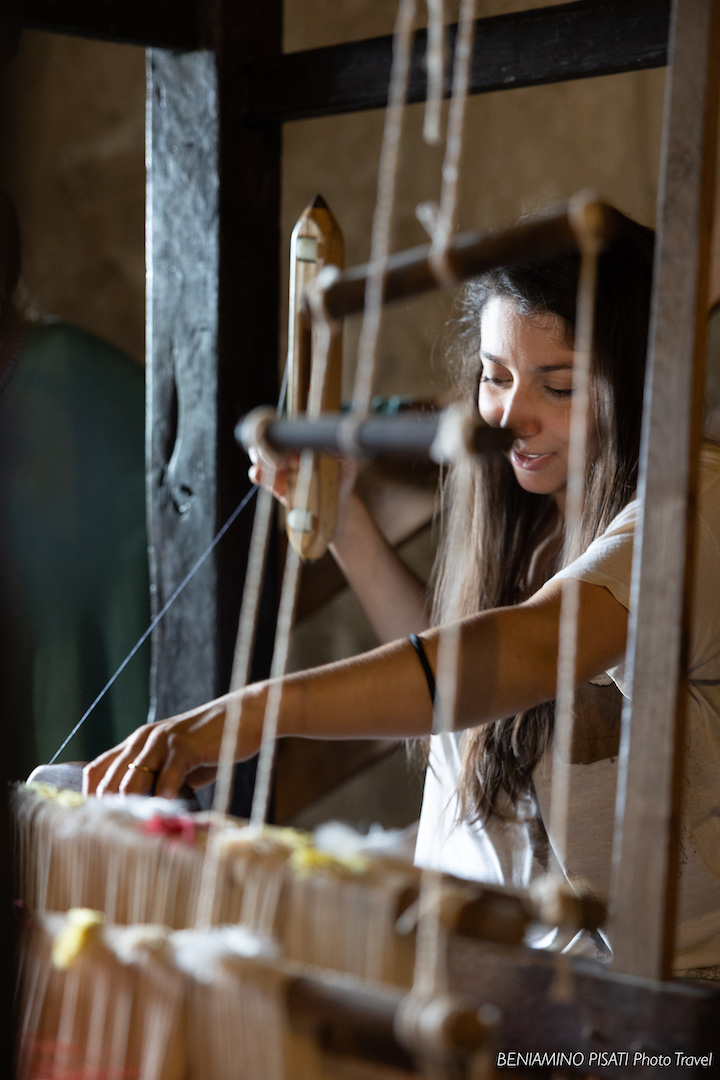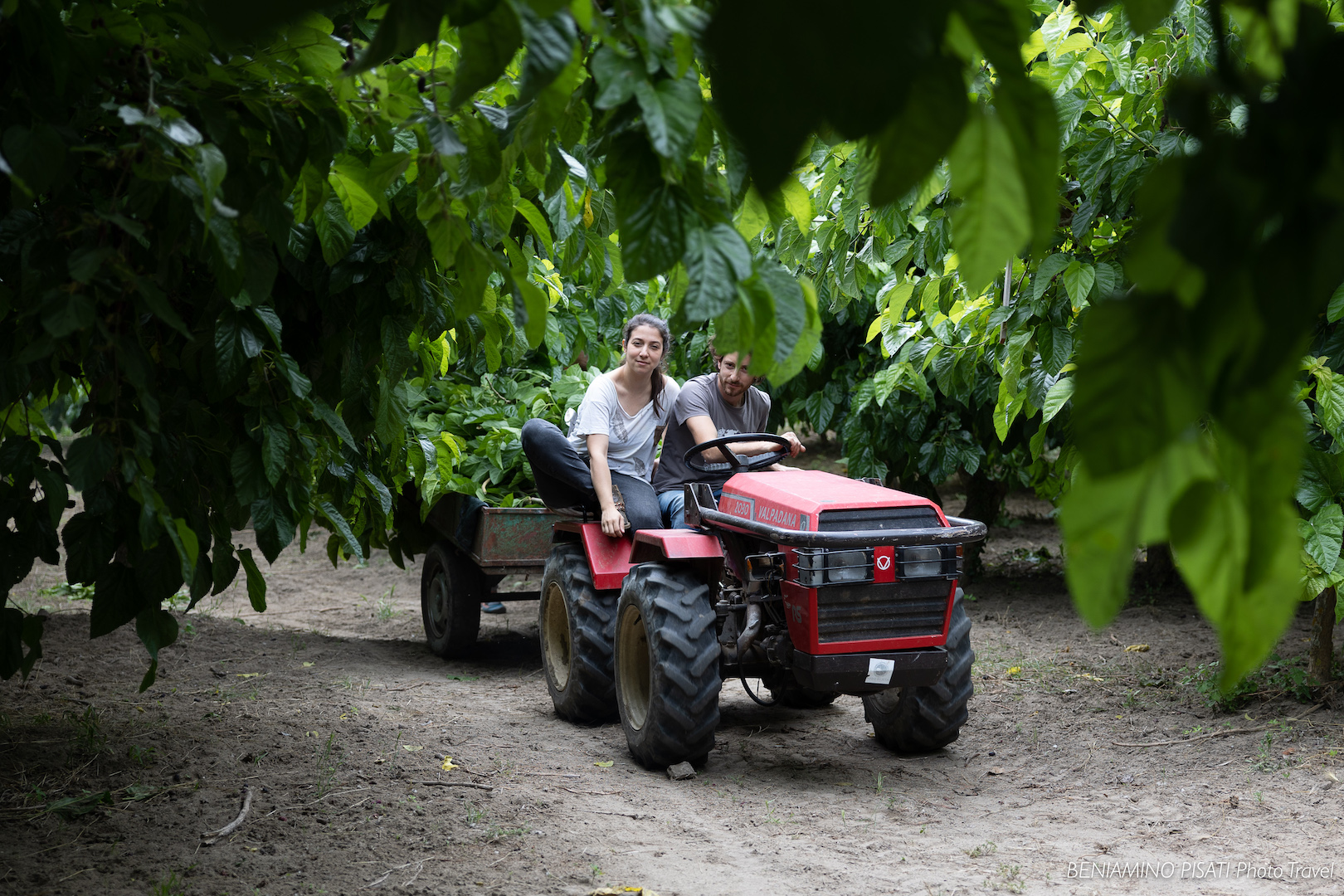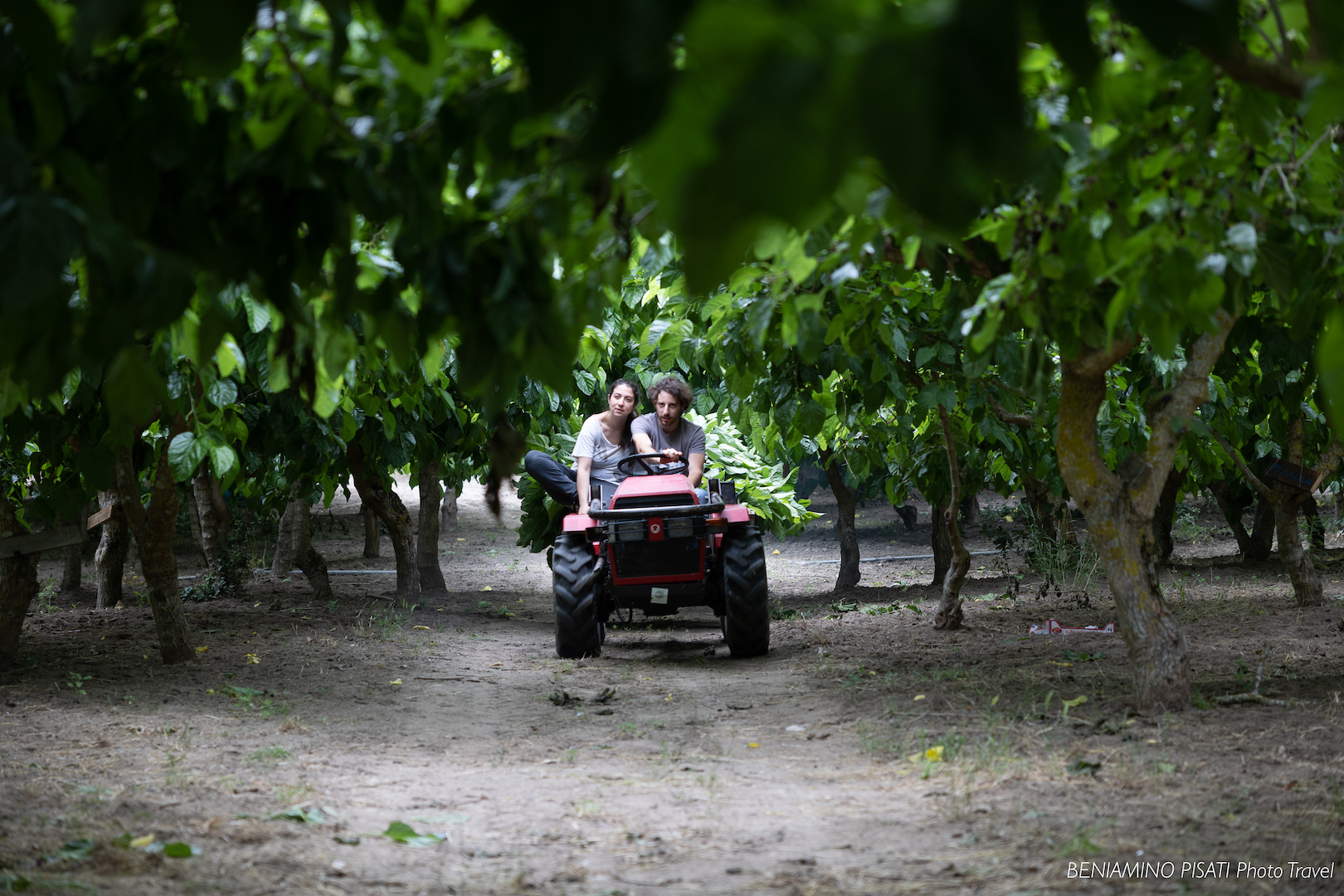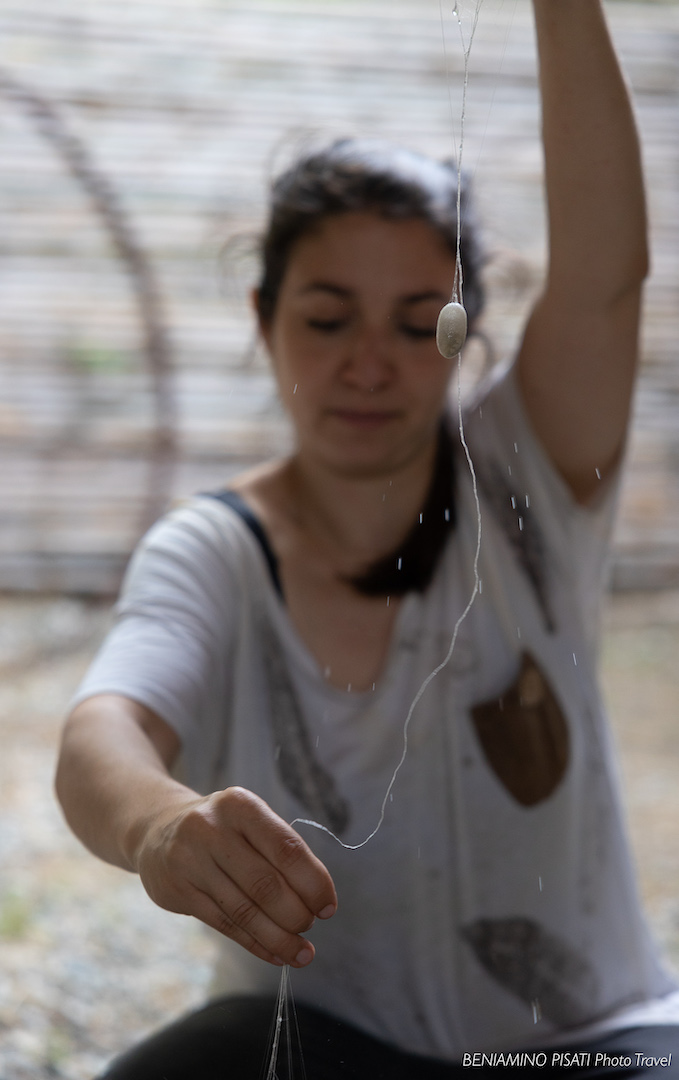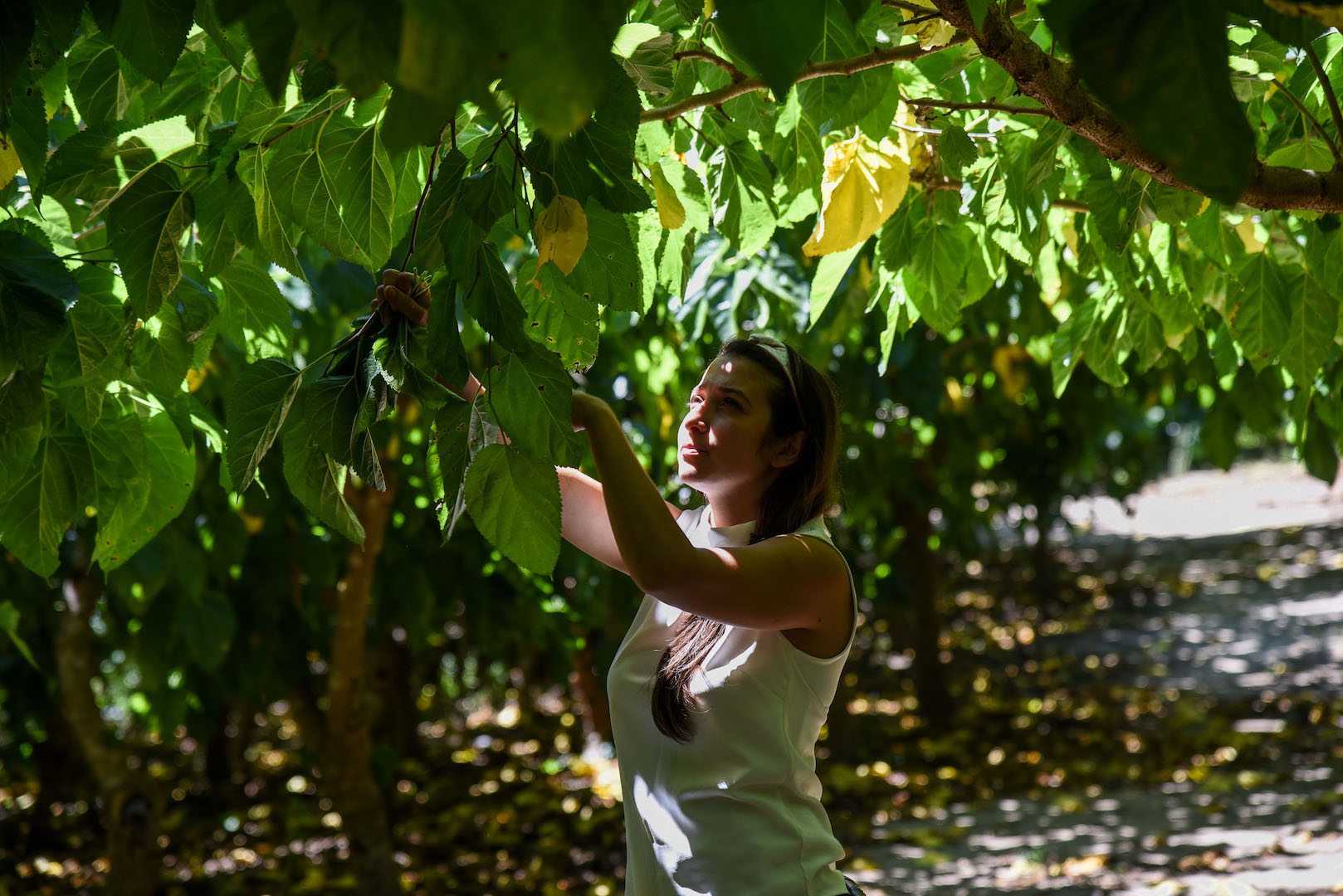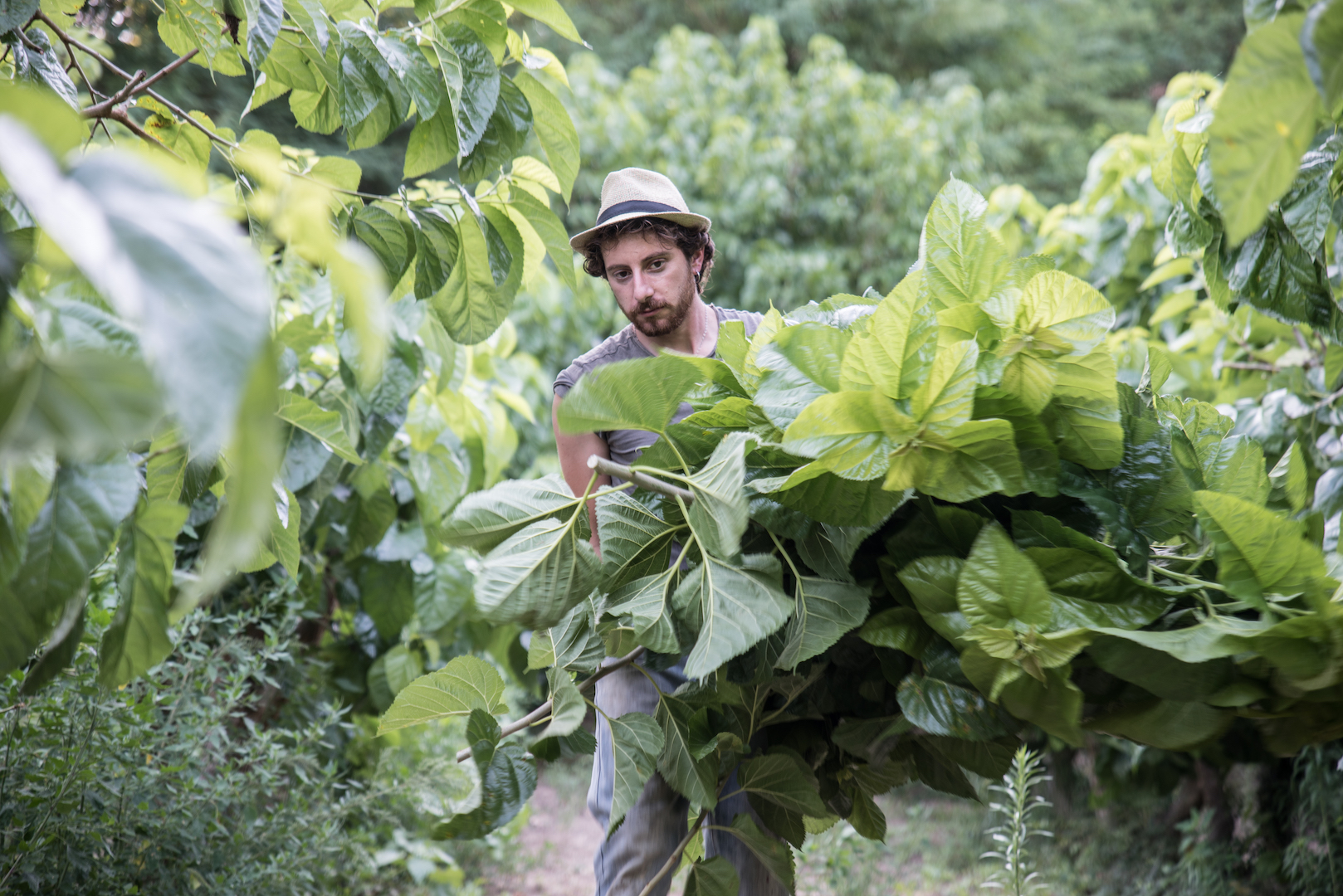Fostering a new silk supply chain in Italy
The history of silk spans thousands of years, inextricably woven into Gucci’s own heritage and found at the heart of the House’s most iconic creations. Though this material embodies the excellence of Made in Italy craftsmanship, its production has been almost entirely lost in the country.
Gucci is supporting its reintroduction in Italy with a pilot project as part of the House’s commitment to promoting regenerative agriculture practices – a key pillar of its nature-positive approach – and where sustainability and innovation go hand-in-hand in silk production and cultivation. An entirely new technique in the silk supply chain is being championed – from the planting of mulberry trees in abandoned landscapes and improving these rural areas through organic farming, to developing new technology for the manufacturing processes, and upskilling farmers and artisans in their silk craft. This initiative will allow the House to source silk from organic farming practices in Italy that can be used in the House’s future collections.
A Cultural Renaissance Starts at the Il Nido di Seta Farm
Il Nido di Seta is a farm located in the small hillside village of San Floro in the Calabria region of southern Italy where three young friends, Miriam Pugliese, Giovanna Bagnato, and Domenico Vivino have come together to bring local traditions back to the fore. After their paths diverged, the three came together again and decided to build their future in this small village of 600 inhabitants and restore the traditional mulberry tree planting and cultivation needed for the rearing of silkworms. Historically, San Floro was famous for a very significant production of raw silk in the 17th century, though this heritage had been completely lost in modern times.
“We keep a reproduction of the property registration map of mulberry groves dating back to 1500. All of Calabria was covered with them and some mulberry groves even dated back to the year 1000. In every Calabrian village and city there is a district name that recalls the mulberry trees in the local dialect and today it’s a rule of thumb that every piece of land, every property, has one or more mulberry trees on it. Regarding the production of the cocoon, however, there are documents showing that starting from the beginning of the 19th century, San Floro produced around 1,500 kg of cocoons every year.”
The only surviving elements of this rich legacy were the 3,000 abandoned mulberry trees and the memory of the elderly villagers. Miriam and her friends brought back the production of silk, rewinding the threads of history and travelling across the world to exchange best practices with silk institutes in Thailand, India, Switzerland, and France. The friends supported the creation of a small group of local women artisans, each working from a home laboratory based in their own small village. As part of its development, they trained people interested in their new, sustainable production model and also brought thousands of tourists from all over the world to visit their farm to experience how silk is produced first-hand.
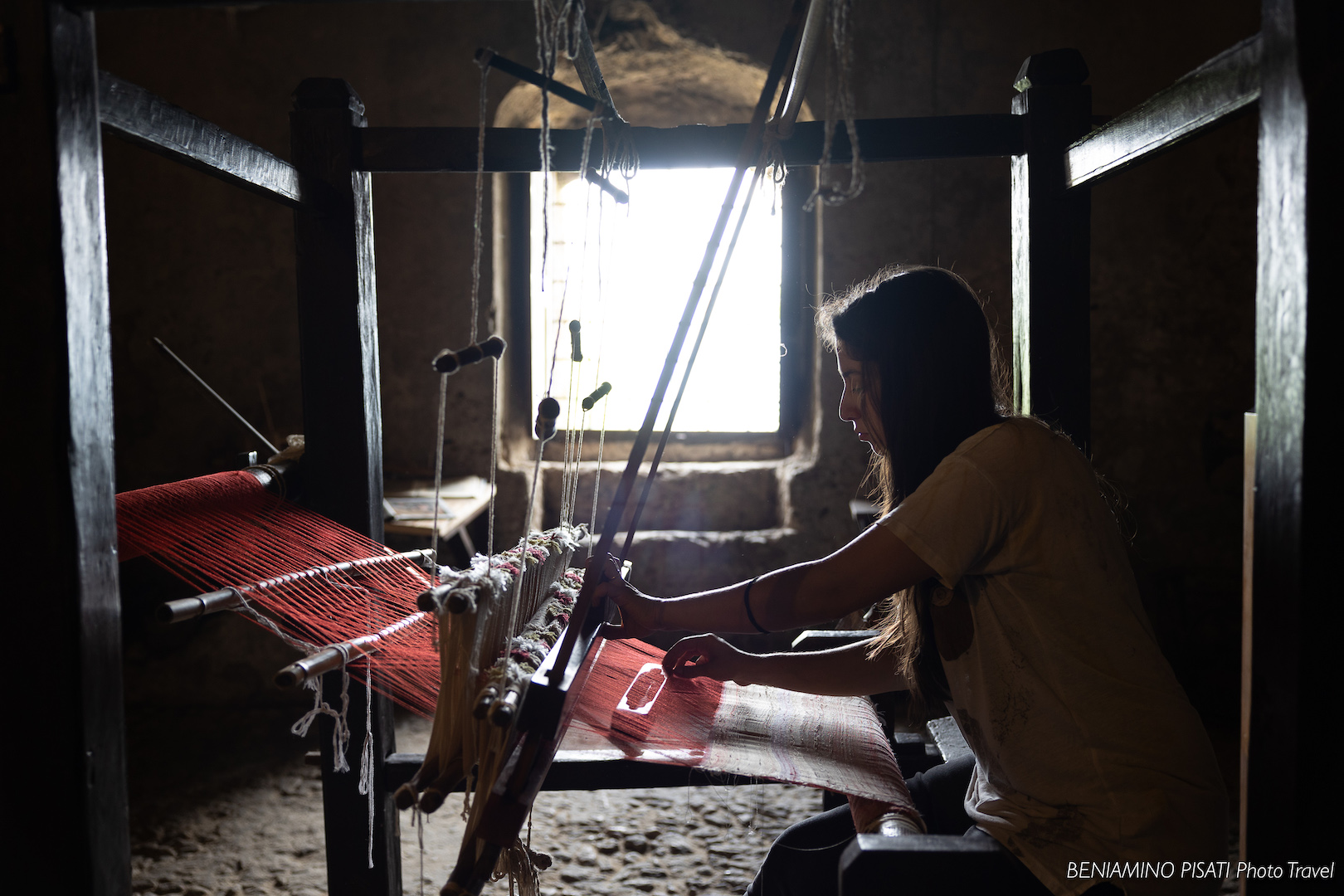
Gucci Supports the Project
At the beginning of 2022, a meeting with Gucci saw the future of the friends’ farm grow even brighter. Thanks to this collaboration with Gucci, Miriam and her friends have undertaken an even greater ambition. The goal of the pilot project is to create a new silk-farming supply chain, including the production of Gucci’s first products made with silk thread that comes from local organic farming practices over the next years. Using this pilot as a best practices example, Gucci will also be able to look into the expansion of the farmers involved, promoting the adoption of regenerative silk production, ultimately bringing the abandoned silk supply chain in the region back to life. With scientific partners CREA, the Italian public research institute specialized in silkworm breeding and rearing technologies, and Ongetta, the producer of silk yarns, the project’s future, and the multi-benefits it creates, is very promising.
A Positive Impact on the Community and the Land
The initiative with Il Nido di Seta will allow for the rediscovery of traditional artisanal skills and create job opportunities in marginalized areas, which have a high risk of depopulation due to the lack of available jobs, which is critical to keep the countryside flourishing. The collaboration will also support Miriam in her objective to maintain the network of local artisan women and Il Nido di Seta’s traditional techniques. Culturally, there is a local Silk Museum to preserve this heritage of silk’s history and traditions, and the three friends have also created an Academy to guarantee the passing on of this ancient knowledge to the next generations of artisans.
Environmentally the project gives back to nature through the planting of mulberry trees, improving the condition of the soil and increasing its ability to sequester carbon from the atmosphere. The tree’s fruit and the residue from the silk production can also be transformed into by-products in a great variety of ways: from jam to cosmetics, encouraging a circular economy through using the resources above and beyond those from the primary silk producing focus.
“With our work we are preventing a tradition, that was a great source of pride for our region, from disappearing into thin air. We are creating an economy taking lessons from our past and now the next exciting challenge is to see the traditions of our ancestors on the international fashion runways,” says Miriam.
